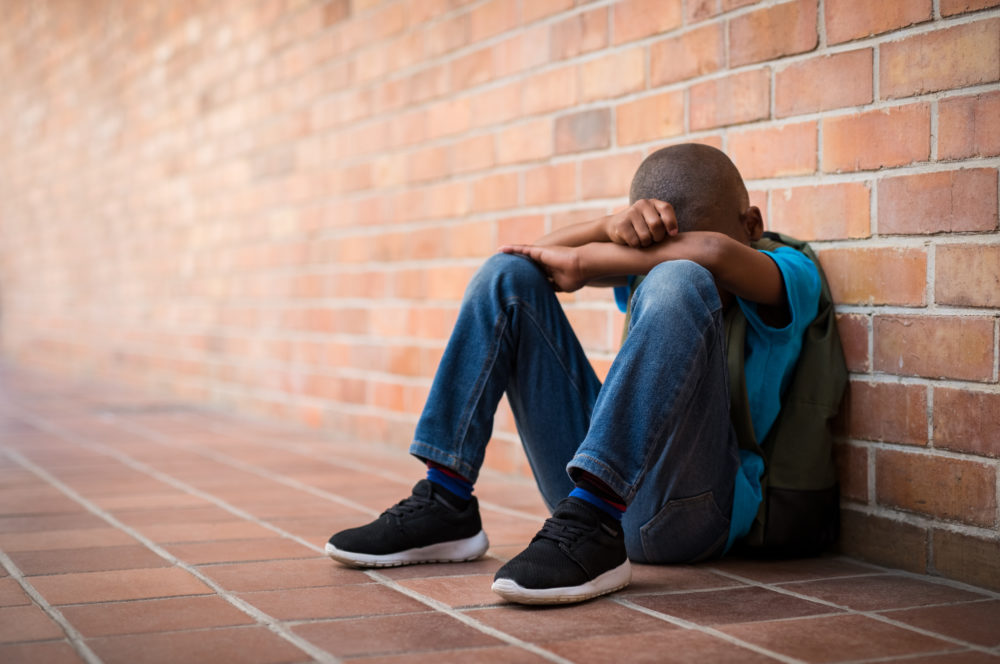For a lot of children in the U.S, especially Black kids, a common part of childhood — alongside the typical birthday parties, playground games and first days of school — are frequent encounters with child welfare services, according to a new study out of Rutgers University and Duke University.
 “Child welfare contact happens a lot more than I think people appreciate,” said Frank Edwards, assistant professor at Rutgers School of Criminal Justice and a co-author of the study. “Investigations by child welfare services is a normal event for most groups of children in the United States, and it’s particularly true for Black children.”
“Child welfare contact happens a lot more than I think people appreciate,” said Frank Edwards, assistant professor at Rutgers School of Criminal Justice and a co-author of the study. “Investigations by child welfare services is a normal event for most groups of children in the United States, and it’s particularly true for Black children.”
According to the study, Contact with Child Protective Services is pervasive but unequally distributed by race and ethnicity in large U.S. counties, 1 in 3 children will be part of a Child Protective Services investigation at some point in their childhood.
Those numbers dramatically go up for Black children who live in large counties. In some areas, like Los Angeles County, Black youth have a more than a seven out of ten chance of being investigated by CPS before the age of 18. Overall, the rates of CPS investigation among Black children ranged from roughly 40% to more than 70%, according to the study. The risk for groups of children — white, Black, Hispanic, was more than 20%.
Statistically speaking, in high contact counties, Edwards said, a CPS investigation is “an event that more children experience than don’t experience.”
Additionally, the study found that 1 in 8 children will experience confirmed maltreatment, 1 in 17 will be placed in foster care and 1 in 100 will have parental rights terminated. Black children and Native American children are more likely to be placed in foster care or have parental rights terminated.
“We’ve shown that there’s profound racial inequality on child welfare system outcomes for Black kids,” he said, adding that the findings are “consistent with a lot of prior research on the child welfare system.”
Even so, Edwards said that racial inequality “certainly deserves closer attention and action from child welfare policymakers.”
In his prior research, Edwards has found incredibly high rates of child welfare contact among American Indian and Alaska Natives — with rates in some states at 80%.
The study, which was released July 27, looked at national CPS cumulative data between 2014 and 2018 in 20 of the most populous counties in the country.
The data is a clear reflection of the “incredible levels of child poverty in the United States” more than bad parenting, said Edwards.
But the results are not without limitations. The risk levels are based on a single point in time with the assumption that risk levels will stay the same over the course of childhood. For example, if risk levels increased — such as within the context of a pandemic — the estimates the study demonstrates wouldn’t match what children are actually experiencing. Nor does the study take into account recent policies, such as the American Rescue Plan’s Child Tax Credit and other actions that address food and housing insecurity.
Edwards, who has been researching the child welfare system for nearly a decade and before that was a frontline worker with children in foster care, said the results in his study aren’t all that surprising. The national average for Black kids’ contact with child services is nearly 50%, he said. But what struck him was just how many counties have CPS contact rates at 60% or higher for Black children, and the median rate for these large counties is about 40% CPS across all groups of children.
What does this mean? Well, two troubling things, said Edwards. One, the high volume of kids contacted by CPS is clearly a reflection of overreporting. Two, the primary tool professionals, like teachers and health care workers, have to respond to family crises is to call CPS. There are not a lot of other options, he noted.
“We’ve kind of reduced this really complex thing of child and family crisis to a single intervention: surveillance with the threat of child removal,” Edwards said.
As to whether CPS intervention is good or bad for children, the body of research is mixed. On the one hand, when children are being abused or mistreated, they clearly need help. But whether that help should be in the form of a CPS investigation, Edwards and his co-authors aren’t so sure.
The study noted that it is unclear whether the CPS encounters cause poor outcomes in children or are merely associated with them. Either way, the “research nonetheless shows that children who have come into contact with CPS fare poorly on a range of outcomes,” the study says.
Ultimately, this data reveals a huge number of children live in conditions that cause many people to suspect some form of child abuse or neglect is happening, Edwards said. And to him, that is a clear reflection of the “incredible levels of child poverty in the United States” more than bad parenting.
Edwards hopes these results encourage counties and lawmakers to reflect on their current policies around CPS investigations.
“These numbers are shocking and I hope that people in the jurisdictions that we’ve described in this study can sit with these numbers and reflect on whether they think this is the appropriate level of intervention in their jurisdiction,” he said.






























